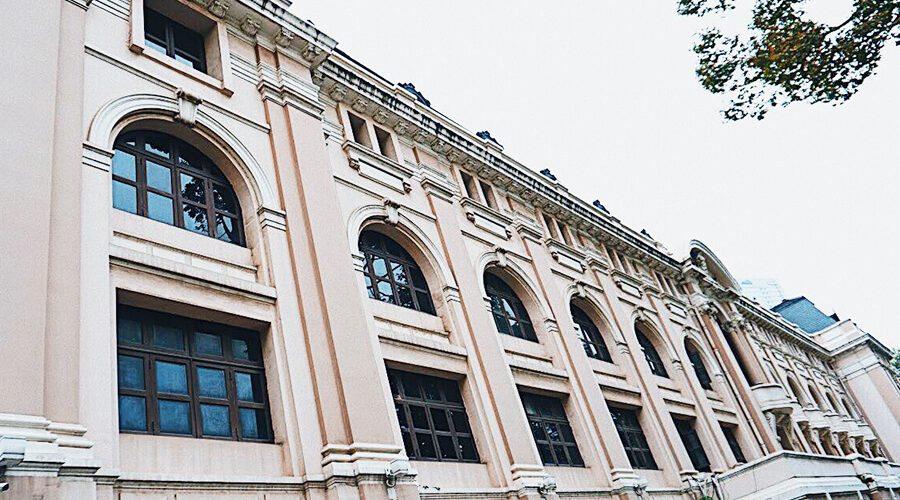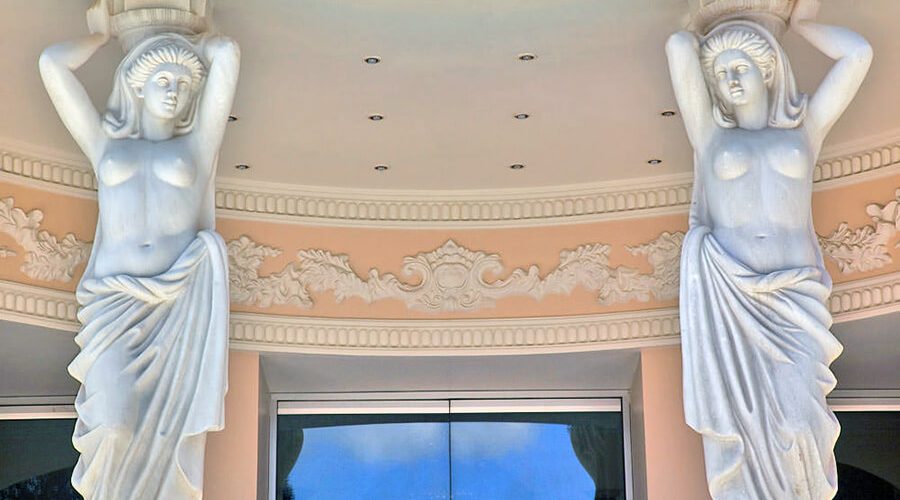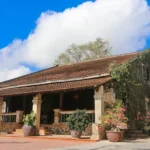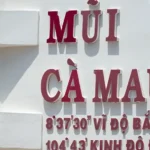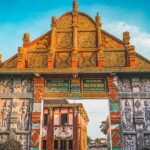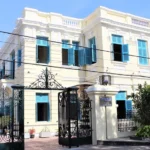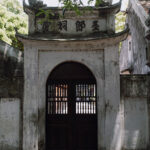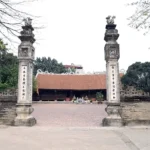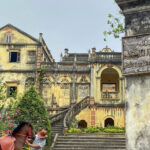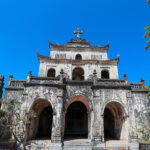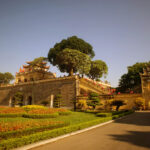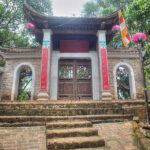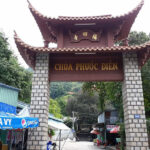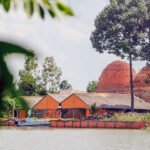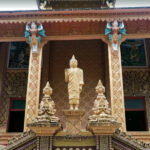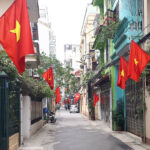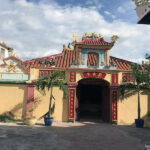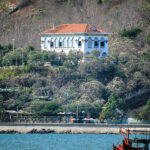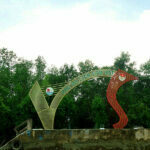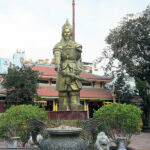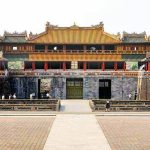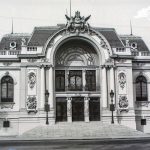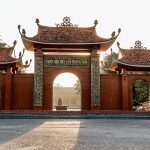The Ho Chi Minh City Opera House, also known as Saigon Opera House, is an architectural work of Gothic style. This is not only a place for performance arts and other important events, but it is also an interesting tourist destination, attracting many visitors who come to admire.
Table of Contents
History of the Ho Chi Minh City Opera House
After the invasion of Cochinchina and the establishment of a colony, to serve the main legions, French colonists invited a theatre company to Saigon.
At first, the group performed temporarily at the wooden house of the French admiral at the Dong Ho Square (Place de l’Horloge) (at present corner of Nguyen Du – Dong Khoi streets). After that, a temporary theater was set up at the Caravelle Hotel. In 1898, the construction of the new theater was commenced right next to the old one, and on January 1, 1900, it was inaugurated.
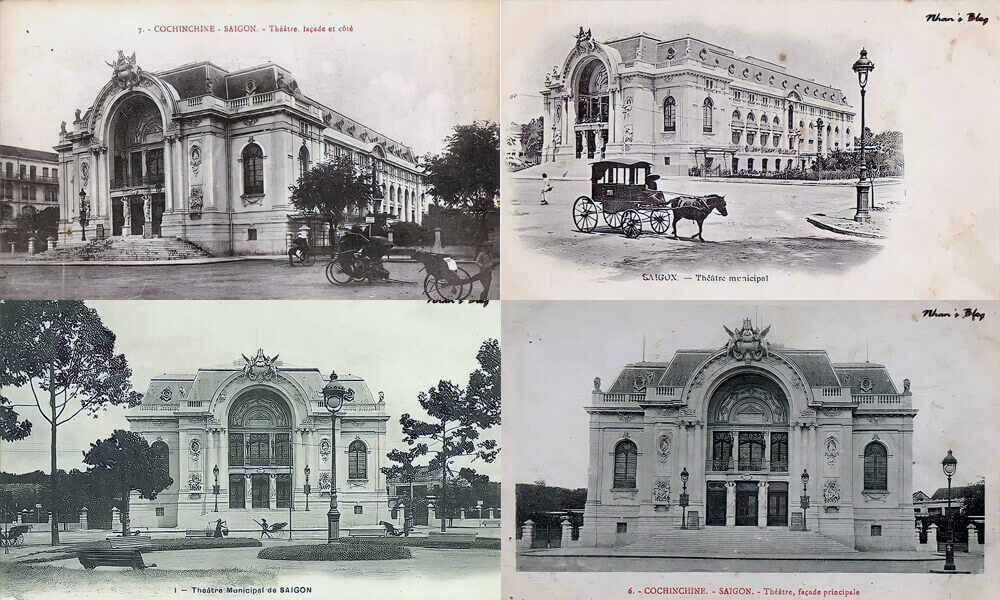
The view outside the old theatre
In 1944, due to Allied aerial attacks that caused extensive damage, the theater ceased operations. After the French army surrendered to the Viet Minh during the Battle of Dien Bien Phu in 1954. The theatre became a temporary shelter for French migrants from the North to the South under the Geneva Accords.
Through 1955, the theater was restored and converted into the headquarters of the National Assembly. During the period 1955-1975, the municipal theater only did political work. The face of the building was changed to suit the new function, the small patterns were completely removed, and the round columns were demolished. The architecture creates square lines to suit the position of a political meeting headquarters.

However, after the “Fall of Saigon” in 1975, the building was restored to its original function as a theatre. In 1998, when the theater’s restoration was completed and political meetings were no longer held here. At this time, the two stone goddess statues in front of the theater have been restored, returning the theater space to its artistic performance function and making it no longer suitable for political purposes.

The current view of municipal theatre in Ho Chi Minh City
Architecture of the Saigon Opera House
The municipal theatre is a smaller counterpart of the Hanoi Opera House, designed by a group of French architects, Félix Olivier, Eugène Ferret, and Ernest Guichard. The architectural style of the project is characterized by an ingenious combination of architecture and sculpture. The decoration and sculpture are very important, from the outside to the interior, which is covered with many reliefs and statues.

The front of the theater is clearly influenced by the Petit Palais Museum (which displays many works of art from the Ancient to the late 19th century) built in the same year in Paris, France. The façade features a large arch divided into 3 doors to welcome guests, decorated with highlights, and flanked by 2 columns that echo the form of women, following the style of the Greek Caryatids at the Erechtheion.

These two statues were removed when the building was used as the National Assembly of the Saigon government between 1955 – 1975. (photo source: vnexpress)
Above the forehead of the wall under the façade is a mural with 5 goddesses painted on the facade tiles, surrounded by a small pediment with a carving of a goddess and flowers, and below is the words ” Nhà Hát Thành Phố”, meaning municipal theatre, replacing the original “Théatre Municipal” from the French period.

The five figures in the arch are France and the four seasons: Printemps – Spring, Été – Summer, Automne – Autumn, and Hiver – Winter (from left to right).
- Printemps – Spring wears a wreath of white flowers on her head, symbolizing innocence, beginnings, and vitality.
- Été – With a Brown-haired Lady, Summer has a mature and serious beauty, symbolizing the maturity stage in the life cycle.
- France (located in the middle) – The image of a woman symbolizing the spirit of France was popular in French art of the mid-19th and early 20th centuries.
- Automne – Autumn wears a large white chrysanthemum wreath on her head – a symbol of Autumn.
- Hiver: the hard coldness of winter is illustrated by the cloak on the Winter nymph. The cloak’s green color stands for future growth.
The main highlight of the theater is the statue of two angels sitting side by side honoring the Lyre guitar, which is typical of Roman-Greece myth. Below is a cartouche that originally carves two words, “RF” (short for Republique Francaises), and below is the head of Pan, the god of country music. All of the façade sculptures and decoration constitute the “flamboyant” art trend in France at that time.

The view at the top with a motif of two angels sitting next to each other, in the middle is a Lyre typical of Greek mythology.
The theater’s interior is modern, with a full range of sound and lighting systems. In addition to the ground floor, there are 2 seating floors above. The theater has a capacity of up to 500 seats, with 338 on the ground floor and 130 on the second floor, serving audiences for multi-genre art programs.

Inside view of Saigon Opera House in HCMC from above
Looking at the auditorium from the stage, one can clearly see the dome-shaped ceiling with sophisticated patterns bearing the flamboyant architectural style. The auditorium space is decorated with many relief details and classic lighting, bringing a luxurious feeling.

(photo source: vnexpress)
Performing Arts Programs at Ho Chi Minh City Opera House
Worthy of the name Cathedral of Arts, the City Theater is the stage for many types of performances, from opera, chamber music, dance genres, musicals, and more. World-famous artists also often choose this theater as a performance place. If you intend to watch a performance at the Municipal Theatre, below are some extremely worthy shows for you to consider:
A O Show
The performance uniquely combines many art forms, including acrobatics, bamboo circus, and contemporary dance, with traditional Vietnamese music. The one-hour performance of the show definitely takes the audience to the authentic Southern countryside with strong emotions that will sometimes make you say “Ah”, “Oh”!

The Mist
“The Mist: Morning Mist” is a play that shows the lives of Vietnamese people. The story focuses on the tradition of rice farming, a symbol of Vietnamese agriculture. Actors will perform neoclassical and modern dances, skillfully choreographed to represent the lives of farmers from dawn to harvest. After the show, you may also fall in love with the country’s traditional costumes when the wooden clogs, ao dai, and four-piece dresses in the show appeared more beautiful than ever.

Other programs and ticket fare
Along with many Vietnamese music shows held at the municipal theater, there are symphonies of talented composers such as Mozart, Beethoven, Bach… attracting not only locals but also foreigners who come to enjoy.

Classic show “Ballet Carmen”.
If you want to visit, you can buy tickets to watch shows at the ticket counter or on the Theater’s website. After the performance, you can walk around to admire the architecture and take photos to check in.
Ticket fare to visit the Ho Chi Minh City Opera House
- Special program: 150,000 – 900,000 VND/ticket;
- Regular program: 80,000 – 650,000 VND/ticket.
Located at 7 Dong Khoi Street, Sai Gon Ward, overlooking Le Loi Street, the Ho Chi Minh City Opera House is an ideal discovery for visitors. The theater is not only an architectural and cultural work, but it is also associated with the city’s history, contributing to the charm and elegance of Ho Chi Minh City.
Source: collected by An
Follow us for the best deals on Vietnam package tours and visa services!


